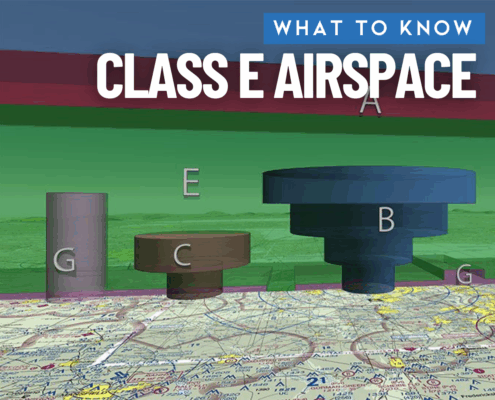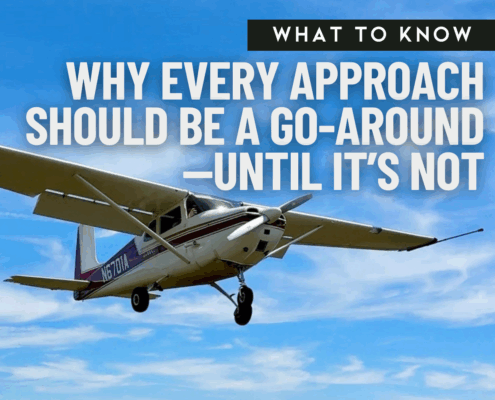
The FAA is Conducting a Ramp Check. Now What?
/
0 Comments
You’ve just shut down, tied down, and are grabbing your flight bag when a neatly dressed individual flashes a badge and says, “Hi, I’m with the FAA.” That sound you just heard? It’s your stomach dropping. But before panic sets in, take a breath. Ramp inspections—yes, those dreaded “ramp checks”—are a normal part of the FAA’s safety oversight system. They’re not necessarily a sign that you’ve done anything wrong.

From the DPE: Why Lazy Eights Are a Challenge for Commercial Pilot Students
In this month’s From the DPE column, Jason Blair takes a deep dive into one of the most deceptively difficult maneuvers for commercial pilot students: the lazy eight. He explains why it tests not only technical skill but also energy management, coordination, and that elusive “feel” for the aircraft.

Pilot’s Guide to Class E Airspace
Class E airspace is often confusing because it's not clearly depicted on the sectional chart but it’s crucial to understand its boundaries

Distractions on the Ramp: How a Moment’s Inattention Can Cost Lives
Distractions on the ramp can be deadly. From cell phones to social media, even small lapses in attention can put pilots, passengers, and line personnel at risk. Learn how situational awareness before, during, and after flight can prevent accidents and keep everyone safe.

From the DPE: The Lost Art of Calling for a Weather Briefing
The reluctance to call for a phone briefing not only limits their understanding of weather contexts but also fosters a superficial approach to flight safety. It's time we revive this "lost art" by encouraging Certified Flight Instructors (CFIs) to integrate traditional briefings into training operations.

The biggest myth in aviation? That great pilots are defined by great flying skills.
So, the next time you’re training a student, mentoring a pilot, or in an interview and someone asks, “Tell me about a time you showed great leadership,” don’t rush to share the story where you look like a flawless hero. Your most powerful stories come from the moments where you were human, when you made a mistake, owned it, learned from it, and helped others grow because of it.

Why Every Approach Should Be a Go-Around—Until It’s Not
Most pilots learn to fly a go-around early in training, usually in calm conditions with a CFI ready to coach them through the steps. Power up, pitch up, clean up, go-around. It’s one of the standard maneuvers on the checkride, and it’s often treated like just that—a maneuver.

A Comprehensive Guide to the FAA Knowledge Test
Scheduling your FAA knowledge test is an exciting step toward…

The Most Misunderstood Aerodynamic Concepts
Having at least a basic understanding of aerodynamics is important for all pilots and it will be evaluated on the practical exam for a certificate or rating. The further along a pilot is in their certificates, the more advanced their understanding of aerodynamics should be. Pilots should take the time to study this information and be prepared for the practical exam along with being prepared for flight situations that will test the application of their understanding.

FAA Pilot Minute Video: Will Prescribed Testosterone Affect My Medical?
The FAA’s Office of Aerospace Medicine has released a “Pilot Minute” video that addresses the growing use of testosterone therapy and how it can affect your medical certification. Whether you're currently taking testosterone or considering it, it's important to understand the potential impact on your eligibility to fly. In this short video, Federal Air Surgeon Dr. Susan Northrup explains what the FAA looks for and how to stay in compliance.
